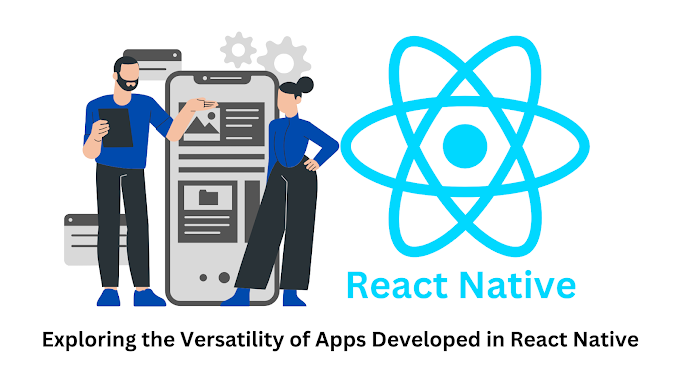Introduction
Python is a versatile and beginner-friendly programming language known for its simplicity and readability. Whether you're new to coding or looking to strengthen your Python skills, this article is designed to help you get started with hands-on practice. We'll provide you with 20 beginner-friendly Python practice programs, complete with examples and detailed explanations. By the end of this article, you'll have a solid foundation in Python programming and be ready to tackle more complex projects.
1. Introduction to Python
What is Python?
Python is a high-level, interpreted programming language known for its simplicity and readability. It was created by Guido van Rossum and first released in 1991. Python's design philosophy emphasizes code readability and allows programmers to express concepts in fewer lines of code than languages like C++ or Java. Python is widely used in web development, data analysis, artificial intelligence, and more.
Why Learn Python?
- Ease of Learning: Python's straightforward syntax makes it an ideal language for beginners.
- Versatility: Python can be used for web development, data analysis, machine learning, and more.
- Large Community: A vast community of Python developers provides support and resources.
- Libraries: Python boasts numerous libraries and frameworks that simplify complex tasks.
Setting Up Your Python Environment
To start coding in Python, you need to set up your development environment. You can download Python from the official website (python.org) and choose an integrated development environment (IDE) like Visual Studio Code or use a code editor like Jupyter Notebook.
2. 20 Beginner-Friendly Python Practice Programs
Let's dive into 20 practice programs that cover essential Python concepts. Each program includes a problem statement, sample code, and detailed explanation.
Practice 1: Printing "Hello, World!"
Problem Statement: Write a Python program that prints "Hello, World!" to the console.
python# Sample Code
print("Hello, World!")Explanation: This program demonstrates the basic syntax of Python and how to print text to the console.
Practice 2: Variables and Data Types
Problem Statement: Declare variables of different data types and perform basic operations on them.
python# Sample Code
# Integer variables
x = 5
y = 3
# Floating-point variables
pi = 3.14
# String variables
name = "Alice"
# Basic arithmetic operations
result = x + yExplanation: This program introduces variables and common data types in Python, including integers, floating-point numbers, and strings.
Practice 3: Basic Arithmetic Operations
Problem Statement: Perform basic arithmetic operations (addition, subtraction, multiplication, division) in Python.
python# Sample Code
a = 10
b = 5
# Addition
sum_result = a + b
# Subtraction
difference_result = a - b
# Multiplication
product_result = a * b
# Division
division_result = a / bExplanation: This program demonstrates how to perform basic arithmetic operations in Python.
Practice 4: Working with Strings
Problem Statement: Manipulate strings by concatenating, slicing, and formatting them.
python# Sample Code
greeting = "Hello"
name = "Alice"
# Concatenation
message = greeting + ", " + name + "!"
# Slicing
substring = message[6:11]
# String formatting
formatted_message = f"Welcome, {name}!"Explanation: This program covers common string operations in Python.
Practice 5: Lists and Indexing
Problem Statement: Create lists, access elements by index, and perform list operations.
python# Sample Code
fruits = ["apple", "banana", "cherry"]
# Accessing elements
first_fruit = fruits[0]
# Adding elements
fruits.append("orange")
# Removing elements
fruits.remove("banana")Explanation: This program introduces lists, indexing, and basic list operations in Python.
Practice 6: Conditional Statements (if-else)
Problem Statement: Use conditional statements to control program flow.
python# Sample Code
x = 10
y = 5
if x > y:
result = "x is greater than y"
else:
result = "y is greater than or equal to x"Explanation: This program demonstrates how to use if-else statements for decision-making.
Practice 7: Loops (for and while)
Problem Statement: Implement for and while loops to iterate through data.
python# Sample Code (for loop)
fruits = ["apple", "banana", "cherry"]
for fruit in fruits:
print(fruit)
# Sample Code (while loop)
count = 0
while count < 5:
print(count)
count += 1Explanation: This program introduces for and while loops in Python.
Practice 8: Functions and Parameters
Problem Statement: Define functions with parameters and return values.
python# Sample Code
def add(x, y):
return x + y
result = add(3, 4)Explanation: This program demonstrates how to define functions with parameters and return values.
Practice 9: Handling User Input
Problem Statement: Receive and process user input in Python programs.
python# Sample Code
name = input("Enter your name: ")
age = int(input("Enter your age: "))Explanation: This program shows how to accept user input and convert it to appropriate data types.
Practice 10: Working with Dictionaries
Problem Statement: Create dictionaries, access values by keys, and perform dictionary operations.
python# Sample Code
person = {"name": "Alice", "age": 30, "city": "New York"}
# Accessing values
name = person["name"]
# Adding key-value pairs
person["job"] = "Engineer"
# Removing key-value pairs
del person["age"]Explanation: This program introduces dictionaries, key-value pairs, and basic dictionary operations.
Practice 11: File Handling
Problem Statement: Read from and write to files using Python.
python# Sample Code (Reading from a file)
with open("sample.txt", "r") as file:
content = file.read()
# Sample Code (Writing to a file)
with open("output.txt", "w") as file:
file.write("Hello, File!")Explanation: This program demonstrates file reading and writing operations in Python.
Practice 12: Exception Handling (try-except)
Problem Statement: Handle exceptions to gracefully deal with errors.
python
# Sample Code
try:
result = 10 / 0
except ZeroDivisionError:
result = "Division by zero is not allowed"Explanation: This program shows how to use try-except blocks to handle exceptions.
Practice 13: List Comprehensions
Problem Statement: Use list comprehensions for concise list creation.
python# Sample Code
numbers = [1, 2, 3, 4, 5]
squared_numbers = [x ** 2 for x in numbers]Explanation: This program introduces list comprehensions for efficient list operations.
Practice 14: Working with Sets
Problem Statement: Create sets, perform set operations (union, intersection), and remove duplicates.
python# Sample Code
set1 = {1, 2, 3}
set2 = {3, 4, 5}
# Union
union_set = set1 | set2
# Intersection
intersection_set = set1 & set2Explanation: This program covers sets and common set operations in Python.
Practice 15: Object-Oriented Programming (OOP)
Problem Statement: Define classes, create objects, and implement methods.
python# Sample Code
class Dog:
def __init__(self, name, age):
self.name = name
self.age = age
def bark(self):
return "Woof!"
# Creating objects
dog1 = Dog("Buddy", 3)
# Calling methods
sound = dog1.bark()Explanation: This program introduces object-oriented programming (OOP) concepts in Python.
Practice 16: Modules and Libraries
Problem Statement: Import and use modules and libraries in Python programs.
python# Sample Code
import math
# Using a module function
sqrt_result = math.sqrt(16)Explanation: This program demonstrates how to import and use external modules and libraries.
Practice 17: Regular Expressions (Regex)
Problem Statement: Apply regular expressions for pattern matching in strings.
python# Sample Code
import re
text = "Python is a versatile language."
pattern = r"\b\w+\b"
matches = re.findall(pattern, text)Explanation: This program covers the basics of regular expressions in Python.
Practice 18: Working with JSON
Problem Statement: Parse JSON data and create JSON objects.
python# Sample Code (Parsing JSON)
import json
json_data = '{"name": "Alice", "age": 25}'
data = json.loads(json_data)
# Sample Code (Creating JSON)
person = {"name": "Bob", "age": 30}
json_person = json.dumps(person)Explanation: This program demonstrates how to work with JSON data in Python.
Practice 19: Web Scraping with BeautifulSoup
Problem Statement: Extract data from websites using the BeautifulSoup library.
python# Sample Code
import requests
from bs4 import BeautifulSoup
url = "https://example.com"
response = requests.get(url)
soup = BeautifulSoup(response.text, "html.parser")
title = soup.title.stringExplanation: This program introduces web scraping using BeautifulSoup.
Practice 20: Creating a Simple Python GUI
Problem Statement: Build a basic graphical user interface (GUI) using the tkinter library.
python# Sample Code
import tkinter as tk
window = tk.Tk()
window.title("Simple GUI")
label = tk.Label(window, text="Hello, GUI!")
label.pack()
window.mainloop()Explanation: This program demonstrates how to create a simple GUI using the tkinter library.
3. Sample Answers and Explanations
Each practice program in this article is accompanied by detailed explanations and sample code. These explanations provide step-by-step guidance on how to achieve the desired results and improve your understanding of Python programming.
4. Conclusion: Mastering Python
By working through these 20 beginner-friendly Python practice programs, you'll gain practical experience and confidence in using Python for various tasks. Python is a versatile language with a wide range of applications, making it a valuable skill for any programmer.
With the knowledge and skills you've acquired, you'll be well-prepared to tackle more advanced Python projects and dive deeper into areas like web development, data analysis, machine learning, and more. So, start practicing and let Python empower your coding journey!












0 Comments